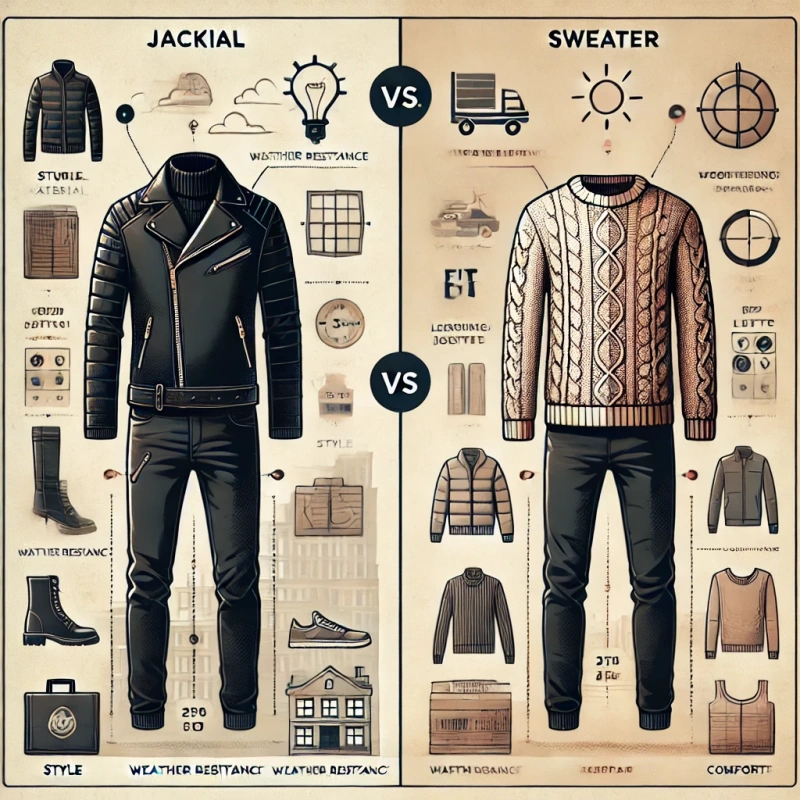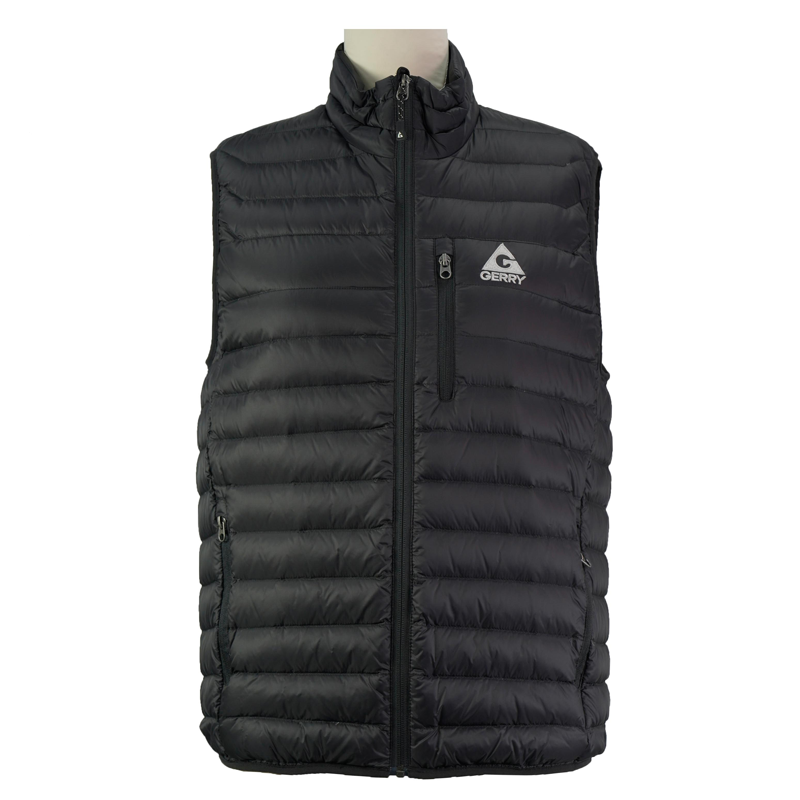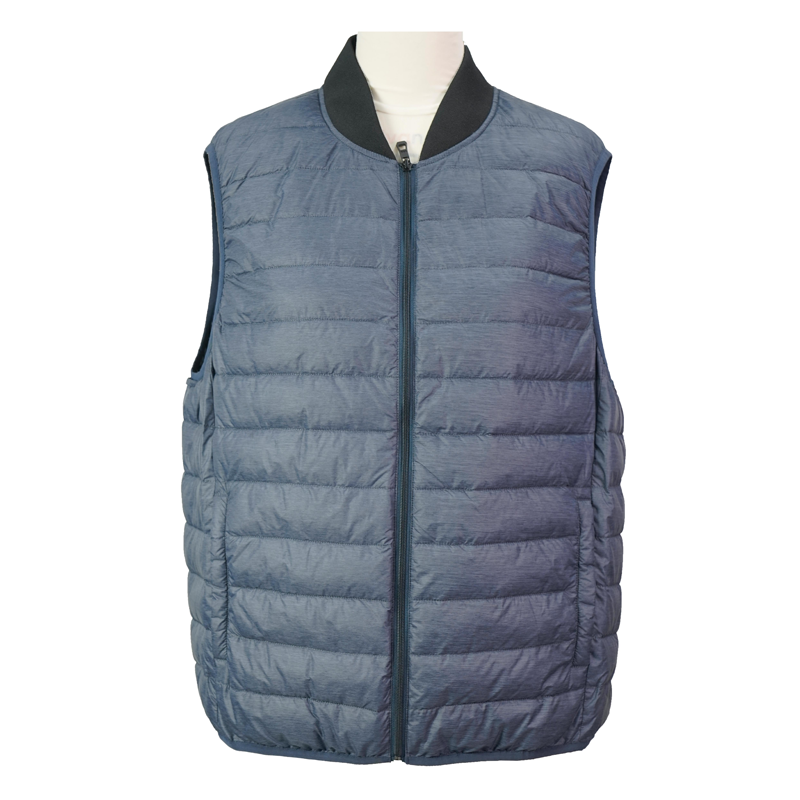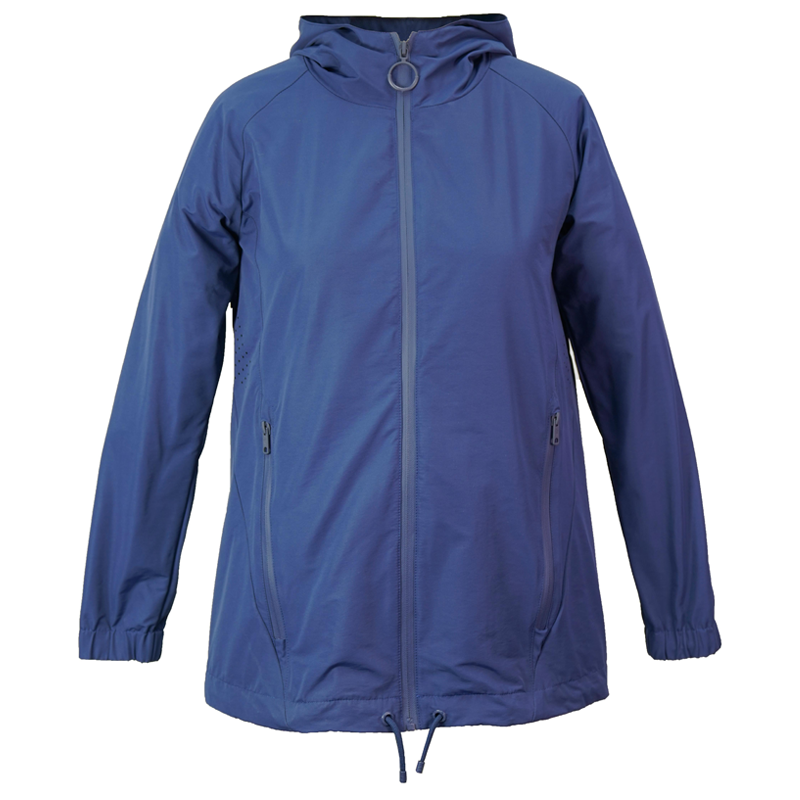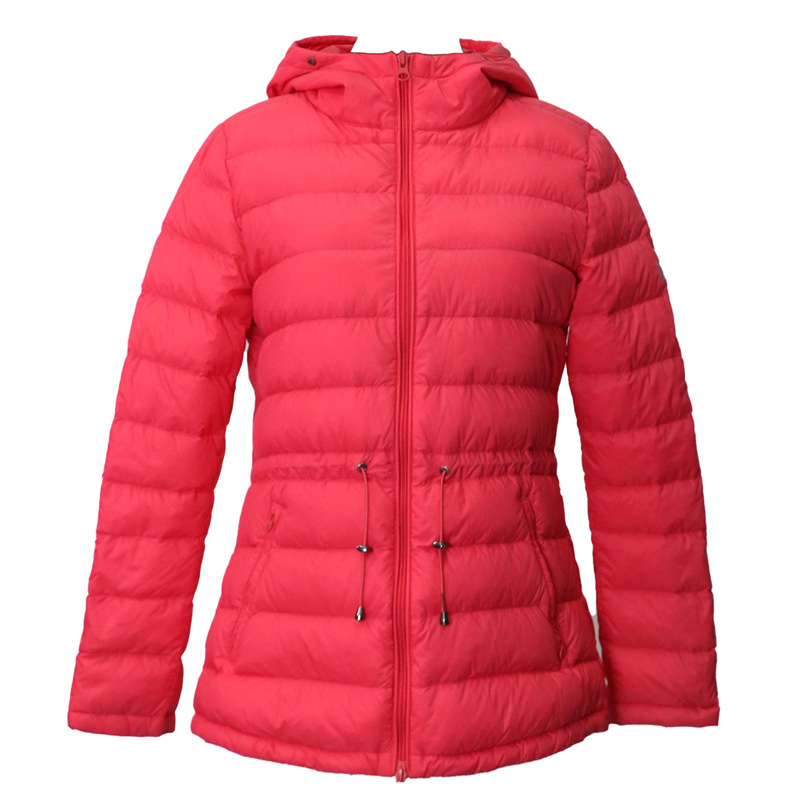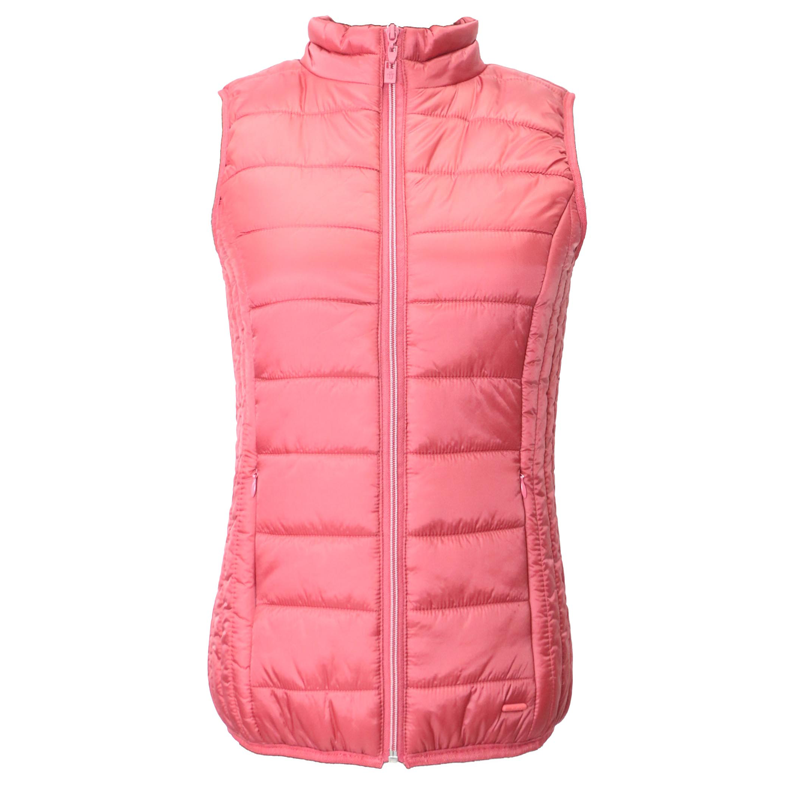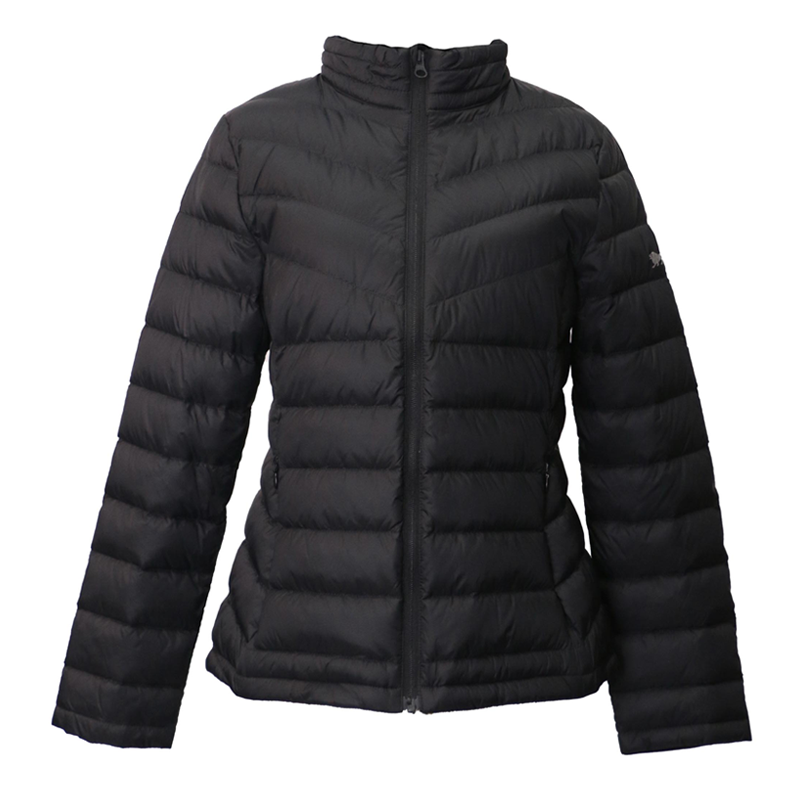Jackets and sweaters are wardrobe staples that serve distinct purposes while occasionally overlapping in function and style. Both offer protection from the cold and contribute to personal style, yet their differences in material, design, and usage set them apart. This article provides an in-depth comparison of jackets and sweaters, examines how they complement each other, and offers tips on styling them effectively for different occasions.
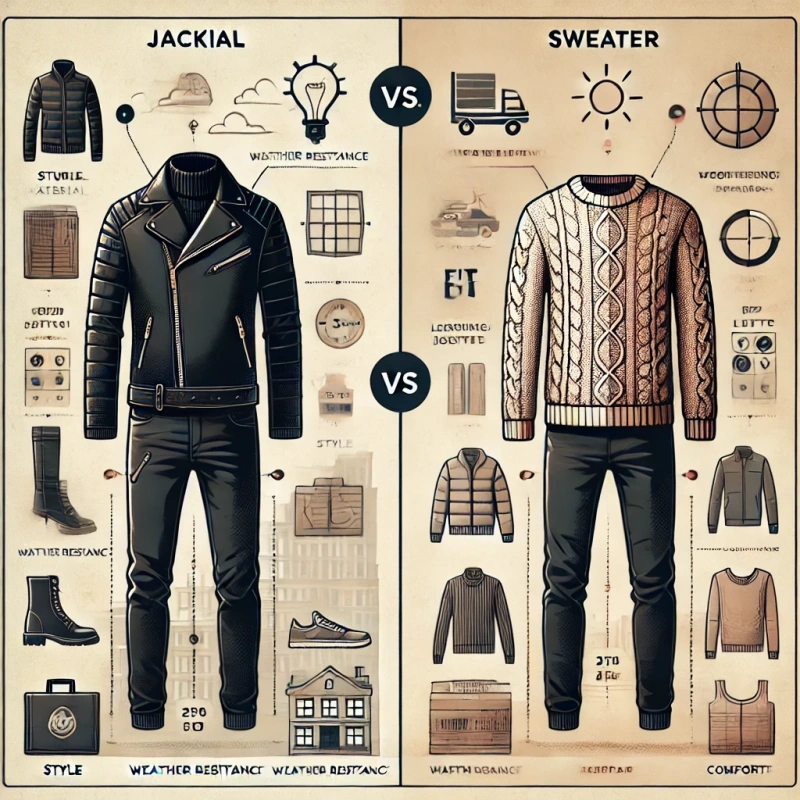
What Is a Jacket?
A jacket is an outerwear garment typically made from sturdy materials like leather, denim, or synthetic fabrics. It is designed to protect against wind, rain, and colder temperatures. Jackets are often structured, featuring zippers, buttons, and various design elements that provide both function and fashion.
Common Features of Jackets:
Made of durable, weather-resistant materials.
Designed for layering over other clothing.
Often include functional details like pockets, collars, and hoods.
Vary in length, typically ending at the waist or hips.
Popular Types of Jackets:
Leather Jackets: Rugged and stylish, often worn for casual or edgy looks.
Denim Jackets: Versatile and perfect for layering in mild weather.
Puffer Jackets: Insulated for warmth in colder climates.
Blazers: Semi-formal to formal jackets for professional settings.
Bomber Jackets: Casual, waist-length jackets with elastic cuffs and hems.

What Is a Sweater?
A sweater is a knit garment typically made from materials like wool, cotton, or synthetic yarns. Sweaters are primarily designed to provide warmth and are generally softer and less structured than jackets. They can be worn on their own or layered under jackets for added insulation.
Common Features of Sweaters:
Made of soft, insulating materials.
Often pullovers or cardigans with buttons or zippers.
Designed for comfort and casual wear, though some styles are formal.
Available in various weights, from lightweight knits to heavy cable-knit designs.
Popular Types of Sweaters:
Pullover Sweaters: Classic style without openings, often crew neck or V-neck.
Cardigans: Open-front sweaters with buttons or zippers.
Turtlenecks: Sweaters with high, close-fitting necklines for added warmth.
Cable Knit Sweaters: Heavier, textured knits perfect for winter.
Sweatshirts: Casual, athletic-style sweaters often made of fleece or cotton.
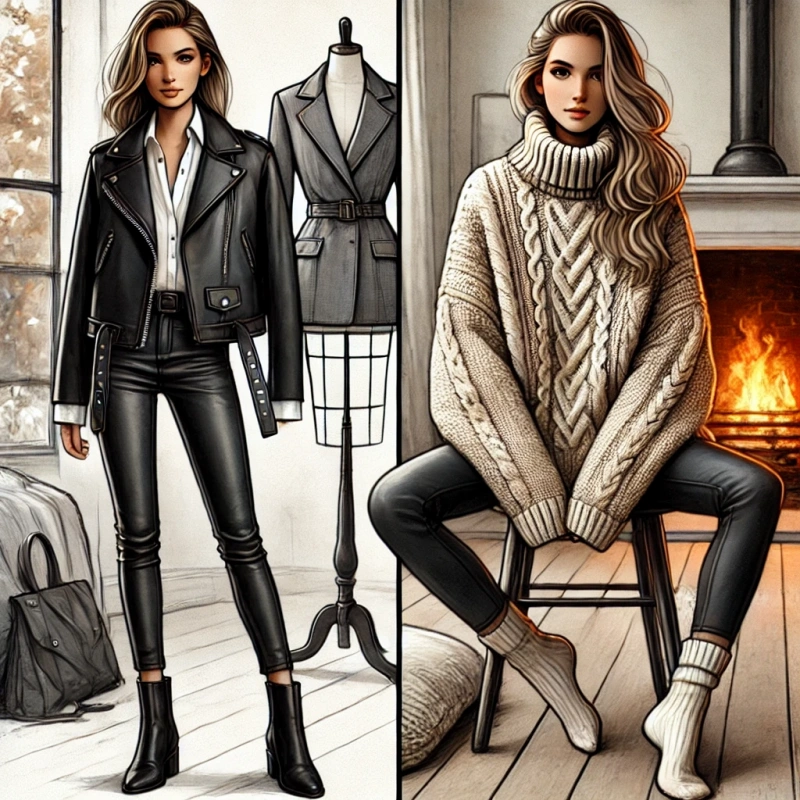
Key Differences Between Jackets and Sweaters
| Aspect | Jacket | Sweater |
|---|---|---|
| Material | Leather, denim, nylon, or synthetic blends | Wool, cotton, acrylic, or knit fabrics |
| Structure | Structured, tailored design | Soft, unstructured design |
| Purpose | Outerwear for protection and layering | Mid-layer or standalone for warmth |
| Weather Resistance | Often weather-resistant (wind, rain) | Not typically weather-resistant |
| Weight | Heavier, with additional insulation options | Lightweight to heavy depending on knit |
| Formality | Casual to formal depending on type | Generally casual, with some formal styles |
| Closure | Zippers, buttons, or open-front designs | Pullovers or buttoned cardigans |
Relationship Between Jackets and Sweaters
Jackets and sweaters often work together in a layered outfit. A sweater provides warmth and comfort, while a jacket adds an extra layer of protection and style. This combination allows for versatility in adapting to changing temperatures and environments.
How They Complement Each Other:
Layering for Warmth:
A sweater worn under a jacket provides insulation during colder weather.
Example: A cable-knit sweater paired with a puffer jacket for outdoor activities.
Style Enhancement:
A jacket can add structure and polish to a casual sweater outfit.
Example: A leather jacket over a crew-neck sweater creates a rugged yet stylish look.
Seasonal Transition:
In spring or fall, a lightweight jacket over a thinner sweater is ideal for unpredictable weather.
Example: A denim jacket layered over a turtleneck sweater.
Formality Balance:
Combining a structured jacket with a casual sweater balances the outfit for semi-formal occasions.
Example: A blazer worn over a V-neck sweater with chinos.
Styling Tips: Jacket vs. Sweater
1. Jackets
Casual Look: Pair a denim jacket with a plain white T-shirt and jeans for a classic casual style.
Edgy Look: A black leather jacket worn over a graphic T-shirt or hoodie creates a bold, streetwear-inspired outfit.
Formal Look: A tailored blazer with a button-up shirt and trousers is ideal for office wear or formal events.
Winter Ready: Combine a parka jacket with a scarf, gloves, and boots for maximum protection in snowy conditions.
2. Sweaters
Casual Comfort: Wear a pullover sweater with joggers or jeans for a relaxed, cozy outfit.
Chic and Feminine: A cropped sweater paired with high-waisted trousers or a skirt creates a stylish look.
Layering Essential: Use a lightweight turtleneck sweater as a base layer under a trench coat or blazer.
Dressy Sweater: Opt for a cashmere sweater with tailored pants and loafers for an upscale, smart-casual outfit.
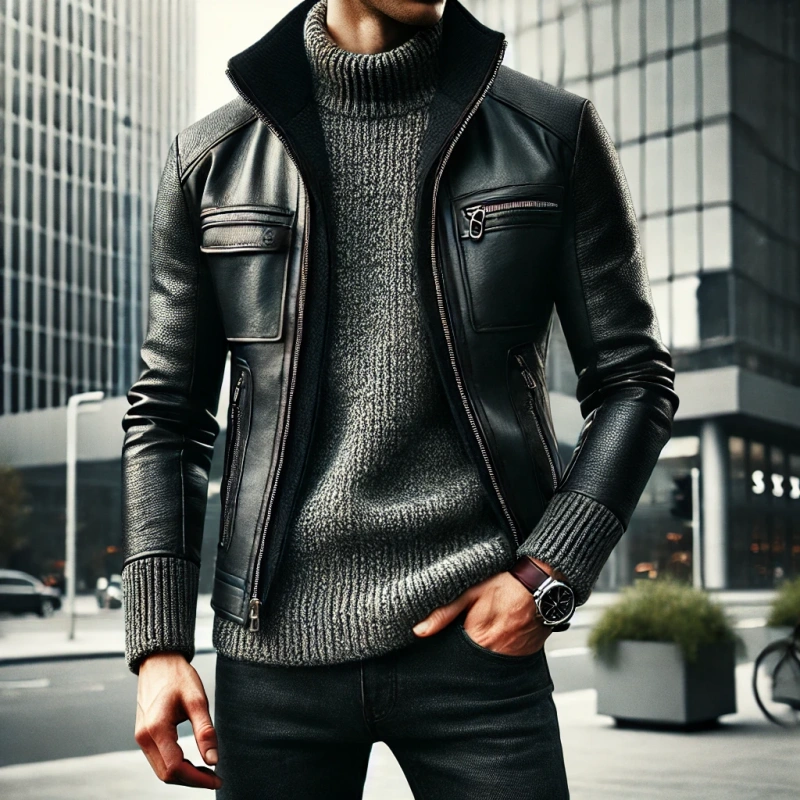
When to Choose a Jacket vs. a Sweater
Choose a Jacket If:
Weather Protection: You need outerwear for wind, rain, or snow.
Layering Over Sweaters: Ideal for colder climates where multiple layers are necessary.
Style Enhancement: Jackets can add structure and polish to any outfit.
Functional Details: Useful for carrying essentials in pockets or providing a hood for rain protection.
Choose a Sweater If:
Comfort and Warmth: Perfect for indoor wear or as a mid-layer.
Lightweight Versatility: Great for transitional seasons like spring and fall.
Casual Occasions: Sweaters are ideal for relaxed settings or cozy evenings.
Standalone Style: Suitable as a single garment for mild weather.
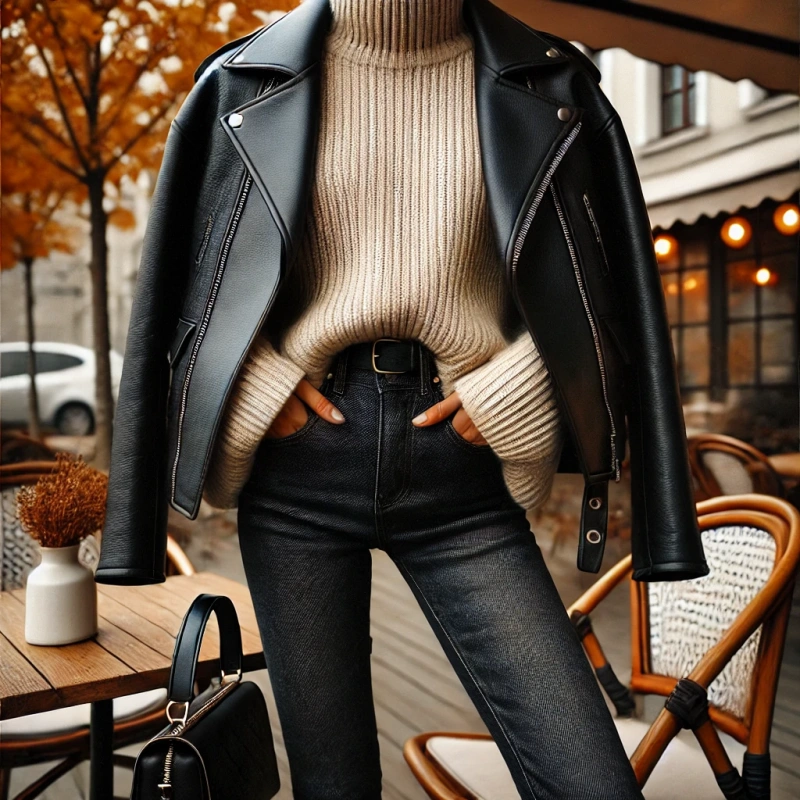
Price Comparison
| Garment Type | Price Range (USD) |
|---|---|
| Jacket (Leather) | $150–$500 |
| Jacket (Denim) | $50–$150 |
| Jacket (Puffer) | $80–$300 |
| Sweater (Wool) | $50–$200 |
| Sweater (Cashmere) | $100–$500 |
| Sweater (Cotton) | $30–$100 |
Conclusion
The choice between a jacket and a sweater depends on your needs, style, and the weather. Jackets excel as protective outerwear and fashion statements, while sweaters offer comfort, warmth, and layering options. Together, they create versatile outfits that balance practicality and style. By understanding their differences and how they complement each other, you can build a wardrobe that adapts to any season or occasion
